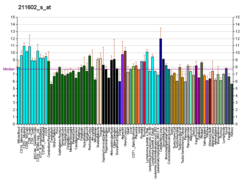| TRPC1 | |||||||||||||||||||||||||||||||||||||||||||||||||||
|---|---|---|---|---|---|---|---|---|---|---|---|---|---|---|---|---|---|---|---|---|---|---|---|---|---|---|---|---|---|---|---|---|---|---|---|---|---|---|---|---|---|---|---|---|---|---|---|---|---|---|---|
| Identifiers | |||||||||||||||||||||||||||||||||||||||||||||||||||
| Aliases | TRPC1 , HTRP-1, TRP1, transient receptor potential cation channel subfamily C member 1 | ||||||||||||||||||||||||||||||||||||||||||||||||||
| External IDs | OMIM: 602343; MGI: 109528; HomoloGene: 2478; GeneCards: TRPC1; OMA:TRPC1 - orthologs | ||||||||||||||||||||||||||||||||||||||||||||||||||
| |||||||||||||||||||||||||||||||||||||||||||||||||||
| |||||||||||||||||||||||||||||||||||||||||||||||||||
| |||||||||||||||||||||||||||||||||||||||||||||||||||
| |||||||||||||||||||||||||||||||||||||||||||||||||||
| Wikidata | |||||||||||||||||||||||||||||||||||||||||||||||||||
| |||||||||||||||||||||||||||||||||||||||||||||||||||
Transient receptor potential canonical 1 (TRPC1) is a protein that in humans is encoded by the TRPC1 gene. [5] [6]






